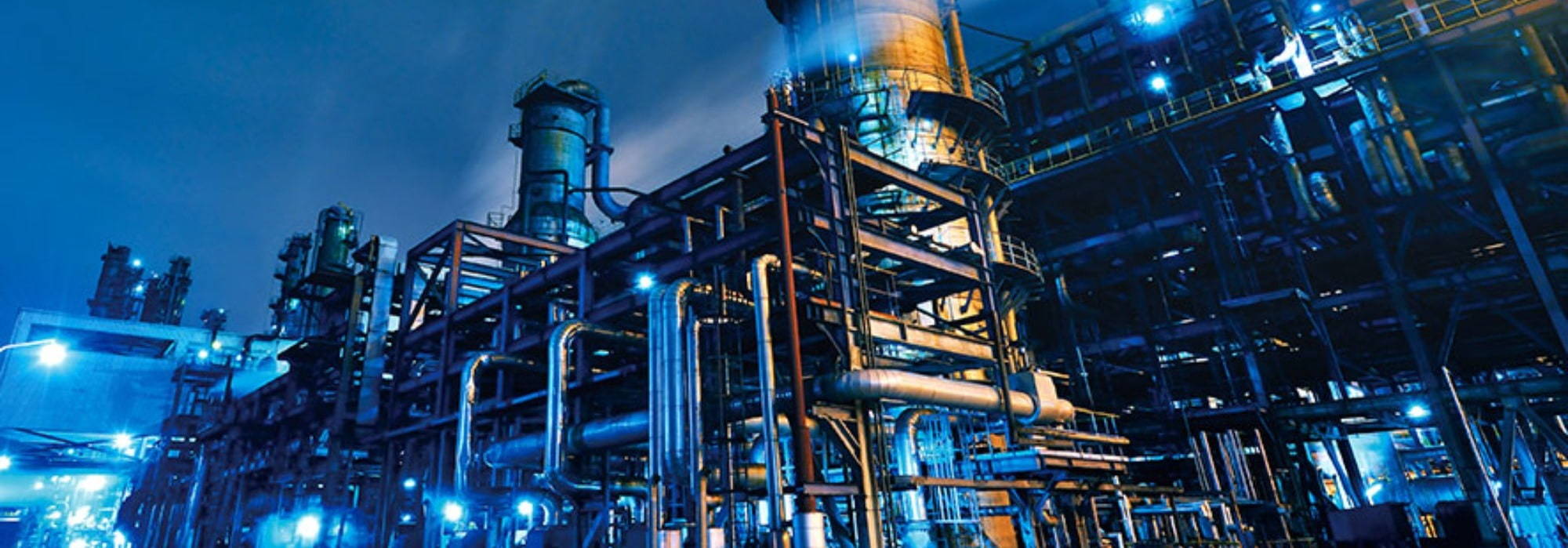How Technology And Digital Transformation Are Changing The Upstream Oil & Gas Industry
14 Aug, 20194:58From 1999 to 2008 oil prices went from under $25 a barrel to more than $160 a barrelThe indu...

From 1999 to 2008 oil prices went from under $25 a barrel to more than $160 a barrel
The industry exploded; oil and gas job opportunities and business activity increased in abundance. At the core of this escalation was supply-and-demand. Rapidly industrialising countries such as China and India experienced massive and accelerated economic growth with a thirst for oil.
What followed for the Oil & Gas industry was a period of stability and relative certainty. From 2009 to 2014 oil prices stabilised around $100 to $125 a barrel. The stability wasn’t to last though. In the midst of 2014, the oil price collapsed in one of the worst market fluctuations to afflict the industry for over 20 years.
Why did the price of oil collapse to such an extent?
A combination of factors:
Following the global recession, those countries that had been the most eager consumers of oil such as China and India were experiencing slowing industrialisation and sluggish economic performance;
Countries which had previously balked at paying the exorbitant barrel prices had stepped up their own domestic production. By 2014 the USA and Canada had achieved enormous production volumes from their shale formations and oil sands respectively.
With overall global demand declining, the negative impact on oil prices was somewhat inevitable.
The downturn caused much pain for the Oil & Gas industry in the short-term, but in the long-term it created a new avenue of benefits, the primary of which being the embrace of digital transformation and technology by the leading energy operators. With lower barrel prices becoming ‘the new normal’, operators were incentivised to reduce their operating costs and improve margins.
The need for new technologies and digital transformation within the upstream Oil & Gas industry
The Oil & Gas industry is one of the most volatile on the planet. An array of social, economic, cultural and political factors all have an influence on the price of oil – and thus upstream operators. To shield themselves against these factors, as well as the increasingly complex nature of new finds, Oil & Gas operators are embracing new technologies and digital transformation.
Which technologies should the Oil & Gas industry embrace?
Throughout the history of the oil and gas industry, workers and businesses alike have benefitted from increasing technological sophistication in the form of advancements in geological data capture and modelling, data analysis and more. For the sake of simplicity, developments can be divided into two main categories; Mechanical Technology, and Digital Technology.
Mechanical Technology
Digital technology may be at the forefront of the minds of industry analysts and commentators, yet mechanical technological advances are having just as great an impact upon the upstream industry.
Heavy Oil Recovery
One of the most exciting advances is Cavitas Energy’s Thermal Heavy Oil Recovery (THOR) system. Funded by the Oil & Gas Technology Centre in Scotland, the THOR system centres around the heating of injection water in heavy oil applications, which is expected to have a substantial impact on heavy oil recovery.
Why this effort to improve heavy oil recovery rates?
Heavy oil is described as such due to its density being higher than that of light crude oil. In the UK Continental Shelf (UKCS) it is estimated that there are sizeable deposits of heavy oil. With access to a more cost-effective, and environmentally recovery option such as THOR, operators will have a greater incentive to pursue this resource. The Oil & Gas Technology has stated that if the THOR system can achieve an increase in recovery of 11%, ‘the average recovery factor for heavy oil fields in the UKCS would increase to 18.5%. When applied to 10% of the 400 million barrels in ‘small pools’ this represents an increase of 44 million barrels of £2.2bn in additional revenue.’
Drilling Operations
One of the most cost heavy aspects of production involves the oil rig. Any rig time that can be saved equates to significant cost savings for the operator. Saving time however, must be done with consideration to numerous safety factors. One of the most complex and dangerous of rig operations is cementing of the well. This cement job needs to remain intact throughout drilling operations and beyond. If a cement job is not carried out correctly, it could result in an environmental disaster.
Well Cementing
A piece of mechanical technology which aims to speed up well cementing, but in a safe and compliant manner, is DeltaTek’s SeaCure system.
Traditional cement jobs involve drill pipe in a string which is suspended beneath a cart. The cement is then pumped into the inner string, feeding directly into the large bore conductor casing. It’s at this point that the cement is often subject to high levels of contamination, which can affect the cement’s integrity, prior to entering the casing annular.
The SeaCure’s bottom hole assembly connects the bottom of the traditional inner string to the casing shoot meaning cement is displaced through the inner string and directly out the bottom and up through the annular. This results in much less contamination, quicker cement placement and minimises cement displacement volume.
This technology, during its first subsea trial utilising Chevron’s Wet Wick Well, managed to save Chevron 8 hours’ worth of rig time. This is especially impressive given that prior to the trial the technology had not been tested in a subsea environment. The technology saves operators round trips needed for cleaning out show tracks and could save them an estimated $500,000 per well.
Digital Technology
There are numerous digital technologies that will enhance recovery and reduce operational costs, and it’s estimated that technological advances in the exploration and production sector could save around $75bn a year by 2023.
The use of computer technology to interpret and analyse seismic data has already yielded significant results for the industry. But there’s even more that could be achieved. At present, 1 in 3 exploration wells find commercially viable reservoirs thanks to computer analysis. However, with further computer development this ratio is expected to improve to 1 in 2, providing significant savings and production gains for exploration and production companies.
Automation and sensor driven activity is also having a significant impact upon E&P operations. Equinor is one the biggest operators to integrate automation technology into their rigs. By integrating this technology into the North Sea rigs Equinor has not only made their rigs safer but has increased drilling efficiency by 15-20%.
As for the use of sensors, Chevron’s Tengiz field in Kazakhstan is one of the largest examples of sensor deployment. Expected to begin production in 2020, the Tengiz field will utilise over 1 million sensors to help increase data-driven decisions, which in turn will have a positive impact upon the total amount of recoverable oil from the project.
The impact of new technologies on the oil and gas industry and digital transformation so far
The UKCS is a leading pioneer in the development and deployment of new mechanical and digital technologies. The results are achieved across the continental shelf have so far been impressive, and if replicated worldwide could lead to both a huge increase in production and huge decrease in costs.
Below are some of the results associated with deploying new technologies across the UKCS:
Digital transformation technology has led to a 10% increase in production efficiency.
New subsurface technologies have unlocked a potential 20bbls.
New technologies have helped achieve a 35% cost reduction in decommissioning activities.
New technologies have helped achieve a 50% reduction in construction costs.
Asset integrity technology has achieved a 50% reduction in lost-time.
If the Oil & Gas sector wishes to continue to develop and guard itself against future oil price fluctuations, it must eagerly embrace new technologies and digital transformation.
Want to get your energy business ready for the upstream tech revolution?
We have 90 years' combined experience working with oil and gas upstream operators across the globe. Our international office network ensures that your business has access to the best technical and engineering talent in the oil and gas market. Our workforce solutions are tailored to the needs of your oil and gas business, with dedicated teams that also specialise in IT recruitment, to help you prepare for the tech revolution.
We also offer exciting jobs for oil and gas professionals and a range of contractor support services to assist you with all logistical needs whilst on an assignment.









